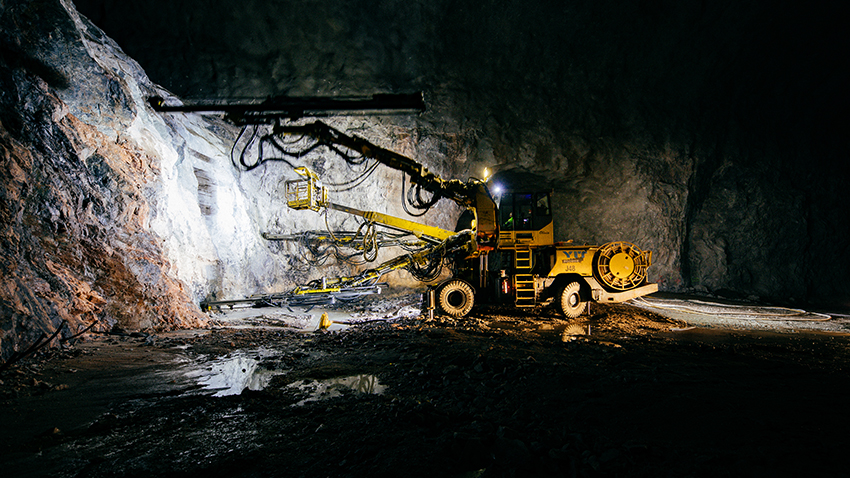Sustainable data centers as a service
- Construction
- Kalliorakentaminen ja kaivokset
- Louhinta
- 10/27/2020
Excavation means controlling the forces of nature
Large machines, explosions and working underground captivated Visa Myllymäki, Vice President, Rock Tunneling, already during his studies.

Visa Myllymäki started his career in rock tunneling already when working as a summer trainee during his studies in 2001. Visa recommends an employee traineeship for newcomers to the field.
“They might want to start immediately in supervisory tasks, but construction site experience prepares you for career progression. You learn a lot during the training and you should take advantage of it. You will have time to fill bigger shoes during the rest of your working career.”
Visa Myllymäki’s site experience includes, for example, working at the mine in Pyhäsalmi, Outokumpu, parking garage excavation in Turku, traffic tunnel excavation in Vuosaari, excavation of Helsinki Airport Terminal 2 baggage tunnel, renovation of Jämsänkoski-Jyväskylä rail traffic tunnel, Länsimetro tunnel excavation, construction of the Kylylahti mine slope tunnel and the E18 Hamina-Vaalimaa motorway Vaalimaa tunnel project.
Since 2018, he has worked as Vice President at YIT, and his area of responsibility is rock tunneling. Visa spends his working days maintaining the efficiency of people, competence, equipment and operating methods.

Working before dawn
In rock engineering, working days start early, with the morning shift coming on at 5–6 a.m. You get used to it. For occupational safety reasons, you cannot be tired in the morning. When the work includes large machines, explosions and underground work, there is no room for errors. People and unique machines are also key players in the work.
“Rock tunneling is concrete work and the results are clearly visible. First you excavate and then make sure that the tunnel will last far into the future without collapsing. Natural conditions, rock and soil create special challenges that need to be managed at all sites. Controlling the forces of nature is one of our biggest challenges,” says Visa.
Large machines are used in excavations, but practically it is manual work. For example, you need to feel the rock when drilling and using the controls of the machine as well as observe visible colour hints and cracks. Rock machining can be learned through experience, which facilitates the work.
“Human work and competence are the most important tools. Leadership, planning, cooperation, knowledge of materials, excavation and blasting technologies, just to mention a few areas. And when it comes to the equipment, the sky is the limit. There are endless possibilities to develop oneself in this industry, since the amount of expertise required master is so extensive.”








